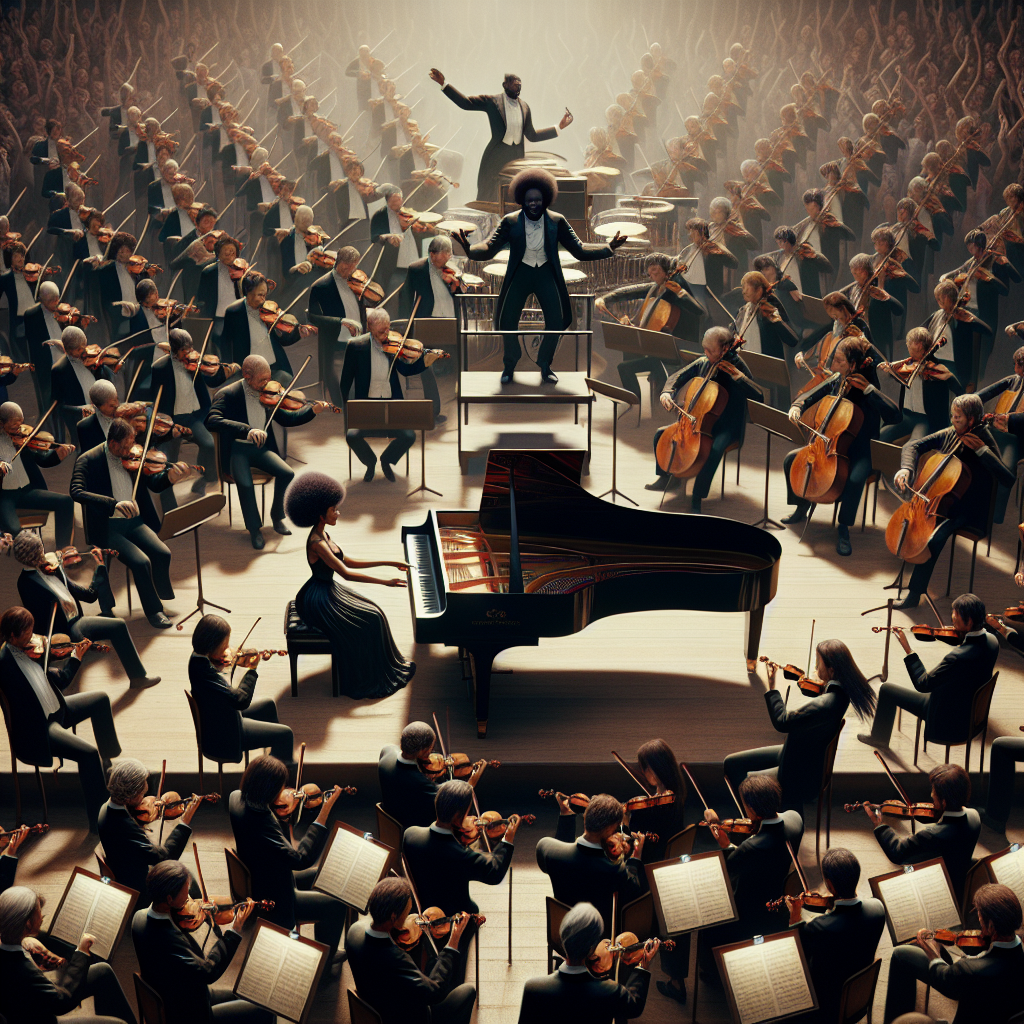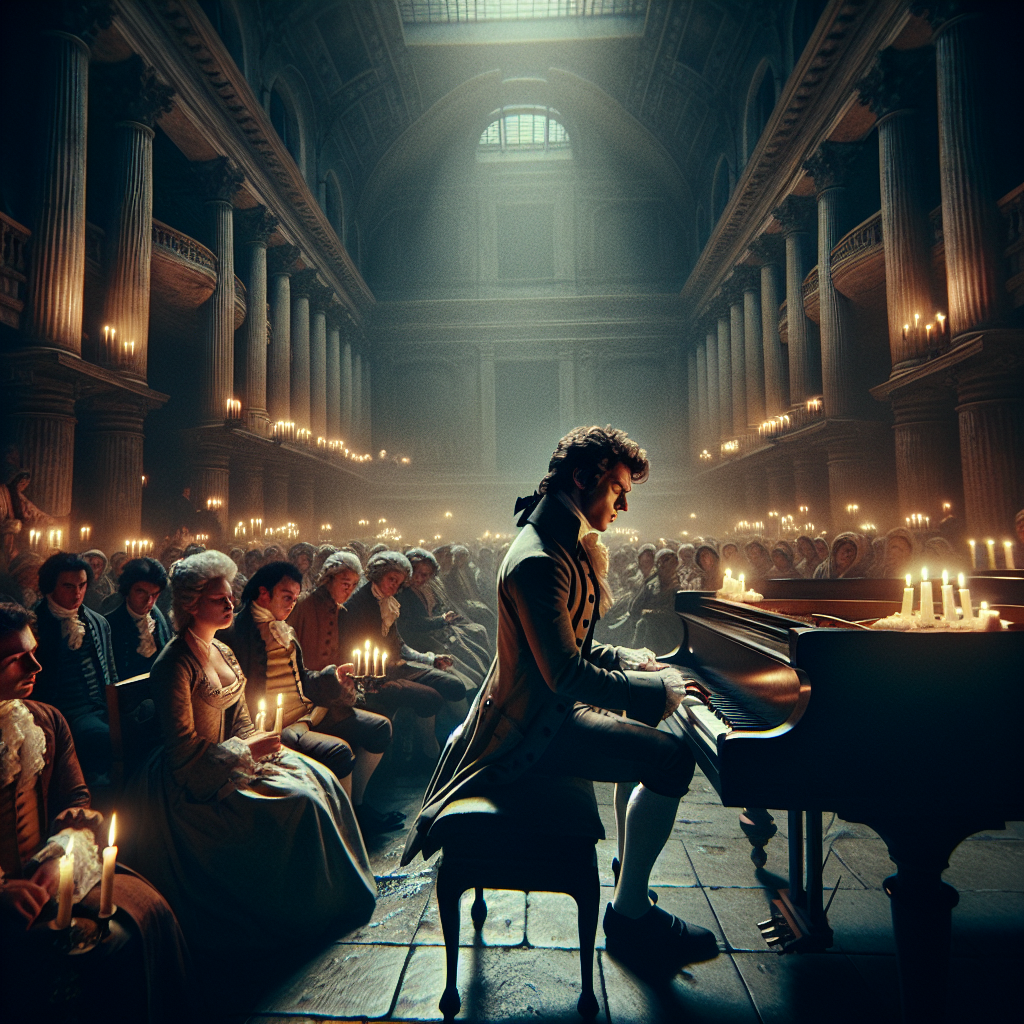
The Revolutionary Piano Concerto No. 2 by Beethoven
Ludwig van Beethoven, the timeless maestro of classical music, continues to inspire countless musicians and enthusiasts worldwide. With his prodigious skills and indomitable spirit, Beethoven composed numerous masterpieces that have left an indelible mark on the world of music. Among his impressive repertoire, his Piano Concerto No. 2 in B-flat major (Op. 19) stands out as a revolutionary work that encapsulates the transition from the Classical to the Romantic era.
Composed between 1787 and 1795, Beethoven’s Piano Concerto No. 2 is often overshadowed by his more famous works such as the Fifth Symphony or the Moonlight Sonata. However, this concerto holds a pivotal place in his oeuvre, showcasing his emerging genius and unique musical voice. The concerto is particularly notable for its innovative structure, thematic development, and virtuosic piano technique, all of which were quite advanced for its time.
As we delve into the history, composition, and impact of Beethoven’s Piano Concerto No. 2, it is essential to appreciate the context in which it was created. This period of Beethoven’s life was marked by his move from Bonn to Vienna, where he sought to establish himself as a composer and pianist. Faced with stiff competition, including the formidable legacy of Mozart and the towering presence of Haydn, Beethoven’s drive to innovate and distinguish himself is evident in this concerto.
In the following sections, we will explore the life and times of Beethoven during the composition of this concerto, the musical and structural elements that define it, its premiere and reception, as well as its enduring legacy in the world of classical music.
The Early Years: Beethoven’s Struggles and Aspirations
Born in Bonn in 1770, Beethoven showed early signs of musical talent under the tutelage of his father, Johann van Beethoven, and other local musicians. His early years were filled with rigorous training and performances, which helped hone his skills as a pianist and composer.
By the time he moved to Vienna in 1792, Beethoven had already grasped the fundamentals of classical composition but was eager to learn from the best. Vienna was the epicenter of the classical music world, and it was here that Beethoven continued his studies under Joseph Haydn and later took lessons from Johann Georg Albrechtsberger and Antonio Salieri.
This period of intense learning and experimentation laid the foundation for Beethoven’s distinct musical style. His early works, including Piano Concerto No. 2, reflect a blend of classical traditions and his burgeoning desire to break free from established norms. Despite facing personal challenges, including the early signs of his deteriorating hearing, Beethoven remained determined to carve out a unique identity in the competitive Viennese musical scene.
The composition of Piano Concerto No. 2 during these formative years illustrates Beethoven’s aspirations and struggles. It is a testament to his resilience and ambition, showcasing his technical prowess and innovative spirit. Even in its early iterations, the concerto exhibited Beethoven’s unmistakable touch, foreshadowing the extraordinary contributions he would make to classical music.
The Composition Process: Innovation and Mastery
Beethoven’s Piano Concerto No. 2 went through several revisions before reaching its final form. The initial drafts date back to his time in Bonn, but significant changes were made once he settled in Vienna. The concerto’s structure follows the traditional three-movement form: Allegro con brio, Adagio, and Rondo (Molto allegro).
The first movement, Allegro con brio, is characterized by its lively and energetic themes. It opens with an orchestral introduction that sets the stage for the piano’s entrance. Beethoven’s use of thematic development and modulation is evident, as he skillfully weaves the piano and orchestra together. The movement showcases the pianist’s technical abilities, with rapid scales, arpeggios, and dynamic contrasts.
The second movement, Adagio, stands in stark contrast to the first. It is marked by its lyrical and expressive quality, offering a moment of introspection and emotional depth. Beethoven’s sensitivity to melody and harmony is on full display, as the piano and orchestra engage in a poignant dialogue. This movement is often praised for its serene beauty and subtle nuances.
The final movement, Rondo (Molto allegro), brings the concerto to a spirited and joyful conclusion. Its rhythmic drive and playful themes create a sense of exuberance and celebration. Beethoven’s clever use of recurring motifs and variations keeps the listener engaged, culminating in a dazzling display of virtuosity.
Throughout the concerto, Beethoven’s innovative approach to form and content is apparent. He pushed the boundaries of the classical concerto, infusing it with elements that would later define the Romantic style. The Piano Concerto No. 2 is a reflection of his technical mastery and creative vision, setting the stage for his future contributions to the genre.

Premiere and Reception: A Star is Born
Beethoven premiered his Piano Concerto No. 2 in Vienna on March 29, 1795, with himself as the soloist. The concert was a success, marking his debut as a composer and pianist in the Viennese musical society. The audience was captivated by his bold and innovative approach, recognizing the emergence of a new musical force.
The concerto received favorable reviews from critics, who praised Beethoven’s virtuosity and originality. It was evident that he was not content to merely follow in the footsteps of his predecessors, but was determined to forge his own path. His performance left a lasting impression, solidifying his reputation as one of the most promising talents of his generation.
Despite the positive reception, Beethoven continued to refine the concerto in the years that followed. He made several revisions, including changes to the piano part and orchestration, ultimately finalizing it in 1798. These adjustments further enhanced the concerto’s impact, ensuring its place as a significant work in his catalog.
The successful premiere of Piano Concerto No. 2 was a turning point in Beethoven’s career. It opened doors for further opportunities, leading to commissions, patronage, and widespread recognition. The concerto remains a testament to his early genius, showcasing his ability to innovate while staying true to the classical tradition.
Musical Analysis: Breaking New Ground
An in-depth analysis of Beethoven’s Piano Concerto No. 2 reveals the compositional techniques and innovations that set it apart from contemporaneous works. One of the most striking aspects is the seamless integration of the piano and orchestra, achieving a balance that was relatively novel for its time.
The opening movement, Allegro con brio, introduces a series of contrasting themes, each serving as a building block for exploration and development throughout the piece. Beethoven’s adeptness with counterpoint and his use of modulations create a dynamic interplay between tension and resolution. The cadenza—a section where the soloist plays alone without orchestral accompaniment—highlights the pianist’s virtuosity while allowing for personal interpretation and improvisation, a hallmark of Beethoven’s style.
The Adagio stands out for its emotional depth and lyricism. Beethoven employs a delicate touch, with the piano often leading gentler, more introspective passages while the orchestra provides a rich, harmonious backdrop. This movement serves as a moment of respite, an emotional anchor that contrasts sharply with the outer movements’ vigorous energy.
The Rondo finale, Molto allegro, epitomizes Beethoven’s ability to blend complexity with accessibility. Its rondo form—where the principal theme alternates with contrasting episodes—creates a lively and engaging structure. The driving rhythms and playful motifs offer a sense of celebration, culminating in a final flourish that leaves the audience exhilarated.
In sum, the concerto’s innovative features include its thematic richness, structural balance, and emotional depth, all of which contribute to its enduring appeal. Beethoven’s willingness to experiment within the classical framework set a precedent for future composers, making Piano Concerto No. 2 a cornerstone in the evolution of the concerto genre.
Legacy and Influence: A Lasting Impact
In the years following its debut, Beethoven’s Piano Concerto No. 2 has continued to be celebrated for its ingenuity and artistry. It has been performed and recorded by countless esteemed pianists, each bringing their unique interpretation to the piece. Over time, it has become a staple in the concert repertoire, appreciated for its challenging yet rewarding nature.
The concerto has also influenced subsequent generations of composers, who have drawn inspiration from Beethoven’s innovative approach. His ability to combine technical brilliance with emotional depth laid the groundwork for the Romantic era, affecting the works of composers such as Chopin, Liszt, and Brahms. Beethoven’s emphasis on individual expression within the concerto form paved the way for more personal and introspective compositions in the 19th century.
Additionally, the Piano Concerto No. 2 has played a significant role in music education, serving as a valuable resource for aspiring pianists and conductors. Its technical demands and interpretative potential make it a challenging yet fulfilling study, fostering a deeper understanding of Beethoven’s musical language and the concerto genre as a whole.
Beyond its technical and educational impact, the concerto’s enduring popularity speaks to its universal appeal. Audiences continue to be moved by Beethoven’s masterful blend of exuberance and introspection, finding relevance and resonance in his music. The Piano Concerto No. 2 remains a testament to Beethoven’s genius, a work that bridges the classical and Romantic eras while standing the test of time.
Conclusion: Beethoven’s Enduring Legacy
Ludwig van Beethoven’s Piano Concerto No. 2 is a monumental work that marks a significant milestone in his early career. Its innovative structure, thematic richness, and technical mastery heralded a new direction in the concerto form, leaving an indelible mark on the world of classical music.
Composed during a period of personal and professional upheaval, the concerto reflects Beethoven’s resilience and relentless pursuit of excellence. Its successful premiere not only cemented his reputation as a brilliant composer and pianist but also opened doors to further opportunities and recognition.
The musical innovations and emotional depth of Piano Concerto No. 2 have continued to inspire and challenge musicians and composers for centuries. Its legacy is evident in its lasting popularity, its influence on subsequent generations of artists, and its role in music education. The concerto serves as a bridge between the classical traditions of Mozart and Haydn and the emerging Romantic sensibilities that would define the 19th century.
As we listen to Beethoven’s Piano Concerto No. 2 today, we are reminded of his extraordinary talent and unwavering spirit. It is a work that continues to captivate and inspire, a testament to the timeless power of music. In celebrating this revolutionary concerto, we honor Beethoven’s enduring legacy and his profound impact on the world of classical music.